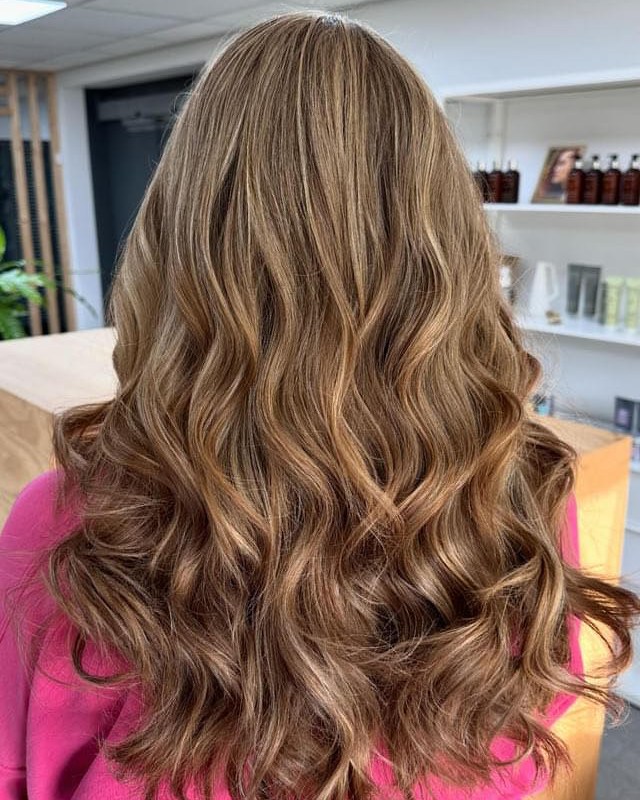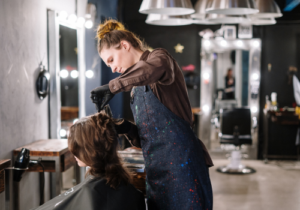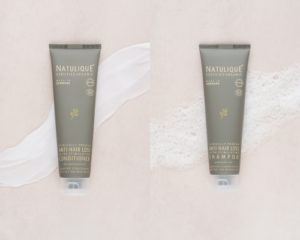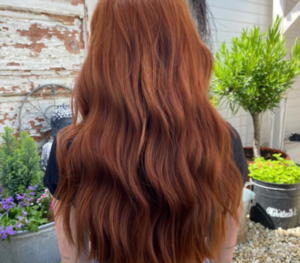Introduction to hair coloring
Visit hair coloring has become a common practice all over the world. Whether to cover gray hair or to express a new facet of your personality, changing your hair color is an exciting decision, but one that can quickly turn into a nightmare if certain mistakes are made. Understanding the nuances of hair coloring is essential to avoid hair disasters. In this section, we'll explore what hair coloring really entails and the factors to consider when choosing the perfect color.
What is hair color?
Hair coloring involves changing your hair's natural color using chemicals or natural methods. This can include temporary, semi-permanent or permanent processes. Each method has its advantages and disadvantages, and the choice often depends on the desired effect and desired durability.
Types of hair color
- Temporary colorations : They offer vibrant color that fades after a few shampoos. Perfect for trying out a new look without long-term commitment.
- Semi-permanent colorations : These colorants last a few weeks and add subtle shades or a brilliant sheen to natural hair.
- Permanent hair color : They require more complex application, but offer long-lasting color that only fades as the hair grows back.
Significance and importance of hair coloring
Beyond the aesthetic aspect, hair coloring can also have a deep personal meaning. For some, it's a form of self-expression, a way of symbolizing a fresh start, or simply a desire to add something new and exciting to their everyday appearance.
How to choose the right hair color
Choosing the right color is essential for a harmonious result. Several factors must be considered:
- Complexion analysis : Your skin color plays a crucial role in selecting a hair shade. The wrong choice can create unsightly contrast or a bleaching effect.
- Hair history : Your hair's current condition and previous treatments also influence your choice of color. Already damaged hair may not be able to withstand certain aggressive colorings.
- Interview: Some colors, especially bright shades and bleached blondes, require more rigorous maintenance. Make sure you're prepared to invest in appropriate hair care to maintain your color.
In short, hair color, whether subtle or bold, can transform your appearance. However, it's crucial to be well-informed to avoid mistakes that could compromise the integrity of your hair or the desired result. Being well-prepared and understanding what each step involves can make all the difference between a successful hair color and a hair disaster.
Common Color Application Errors
Do not perform a wick test
One of the most common mistakes people make before coloring their hair is neglecting the strand test. This simple test could be the key to avoiding hair disasters. The strand test is crucial in determining how your hair will react to the colorant, both in terms of shade and texture.
The importance of the wick test
- Allergic reaction : The chemicals in hair color can cause allergic reactions in some people. Performing a strand and skin test can prevent such unpleasant reactions.
- Unexpected result: Each hair has a unique composition that can affect color development. A test allows you to see how the color will take on a small section before committing completely.
- Damage prevention : Some products may be too aggressive for your hair type, causing irreversible damage. A small test will show whether your hair can withstand the coloring process.
Color application overload
Another common mistake is over-application of color, in the mistaken belief that the more color, the better the result. This practice can have negative effects on the health of your hair.
The consequences of excessive color application
- Hair damage : Too much product can lead to brittle, damaged hair. Cuticles open up too much, leaving hair vulnerable to external aggression.
- Uneven tone: Over-application can lead to uneven color distribution, creating unintentionally darker or lighter areas.
- Difficulty of correction : Correcting over-application often requires further treatments that put even more strain on your hair, prolonging the damage cycle.
Taking the time to prepare your hair before coloring and following the product instructions reduces the risk of overloading. Be sure to distribute the color evenly and adjust the amount to avoid damaging your hair.
In short, avoiding common mistakes when applying color starts with simple but important precautionary steps. Proper preparation, including performing a strand test and applying product thoughtfully, is essential to ensuring a successful coloring experience and healthy hair. Engaging in these practices ensures that the beauty of your hair will be complemented rather than compromised by your choice of color.
See also: Nutritional deficiencies responsible for hair loss
Wrong Color Choices and How to Avoid Them
Choosing a color without regard for skin tone
Hair color selection should always take into account your skin tone. Choosing the wrong shade can sometimes create an unflattering contrast, affecting the overall aesthetics of your appearance. Understanding how to incorporate the nuances of your skin tone into your choice can make a big difference.
How to choose the right color for your skin tone
- Light complexions: Softer shades such as light blondes, ashes or medium browns are often the most flattering. They delicately complement the natural tone without dominating.
- Medium complexions : This skin type can try rich browns, chestnuts or even subtle reds to add depth and warmth. These colors provide contrast that enhances without appearing excessive.
- Dark complexions : Deep colors like jet blacks, dark chestnuts and some dark reds work very well. Avoid very light shades, which can look artificial.
For many hairdressing experts, the secret lies in respecting your warm or cool tone. Cool undertones call for ashy or bluish hues, while warm undertones work well with golden or coppery hues.
Ignore your natural hair color when selecting a color
A common mistake is to overlook your natural base color. It often serves as the best guide for choosing a complementary shade or making a subtle change. Ignoring this reference can lead to disappointing results where the color applied does not harmonize with your roots.
Using natural hair color as a guide for coloring
- Transition method : For those trying coloring for the first time, opt for shades close to your natural color. This allows for a smooth transition and minimizes the risk of regret.
- Accentuating natural features : Using base color as a guide helps you choose shades that enhance the natural radiance of your skin and eyes, creating a naturally harmonious look.
- Tone correction : Concentrate on accentuating or neutralizing certain features inherent to your natural color, such as controlling reddish highlights or reinforcing glossy tones for optimum results.
Taking into account your natural hair color helps simplify shade selection while preserving the integrity of your hair. It also allows you to choose a color that requires reasonable maintenance, avoiding frequent costly corrections.
The impetus for modern hair coloring should always be guided by careful consideration, to avoid falling into the trap of making the wrong choice. Taking the time to analyze both your complexion and your natural color goes a long way to ensuring that the end result is not only unique but also flattering. Whether you want a subtle change or a bold transformation, careful and educated color selection is a must for any hair color company.
Lack of After-Color Care and its Consequences
Neglect of moisturizing after coloring
After coloring your hair, it's crucial to follow a proper care routine to maintain the health and shine of your hair. One of the most common mistakes is neglecting moisturization, which can compromise color longevity and lead to unwanted hair damage.
Hair care routines
- Use of specific shampoos and conditioners: Opt for products specially formulated for color-treated hair, as they help preserve tint and prevent fading.
- Regular hair masks : Intensive weekly treatments with moisturizing masks help replenish lost moisture, strengthening hair fibers to prevent breakage.
- Serums and oils : Apply hair serums and nourishing oils to seal in moisture and give your hair a healthy, shiny appearance.
The right approach after coloring involves paying particular attention to moisturizing care to compensate for any weakening potentially caused by chemicals. Adopting these practices not only preserves the shine of the color, but also protects the hair structure from external aggression.
FAQ
Should you really avoid washing your hair immediately after coloring?
Yes, we recommend avoiding washing your hair for at least 24 to 48 hours after coloring. This allows the color to become firmly anchored in the hair and reduces the risk of premature fading.
How to repair hair damaged by excessive coloring?
To repair damaged hair, use intensive keratin treatments or nourishing masks. Also consider reducing coloring frequency and consulting a professional for personalized advice.
Is it possible to color already damaged hair?
It's best to avoid coloring already damaged hair. Instead, focus on repairing the hair with appropriate treatments before coloring again.
Does daily hair washing affect color?
Yes, washing your hair on a daily basis can accelerate fading, especially for bright colors and reds. Limit washing to two or three times a week, and use warm water instead of hot.
Is it necessary to have a professional follow-up after at-home coloring?
Ideally, yes. A professional follow-up can help to check the health of your hair, adjust the color if necessary and advise you on appropriate post-color care.
Investing in post-color care is essential to prolonging the shine and health of your hair, while avoiding the negative consequences of neglect. Taking a proactive approach and consulting a professional regularly will ensure that your hair remains radiant and vibrant after any coloring procedure.





